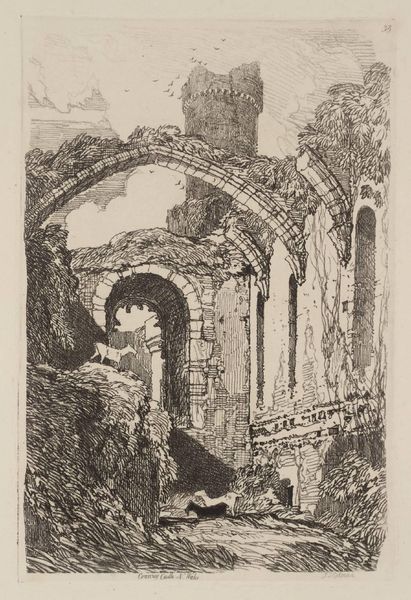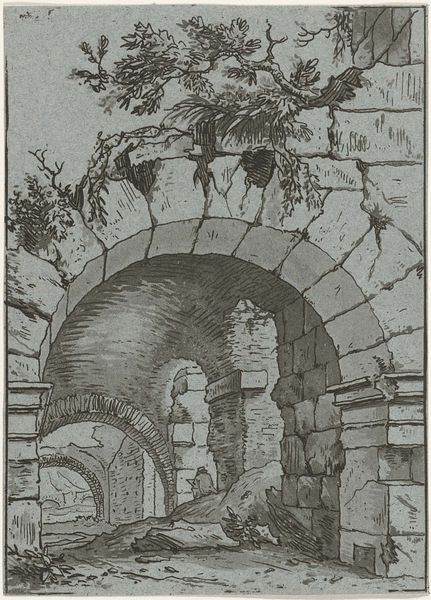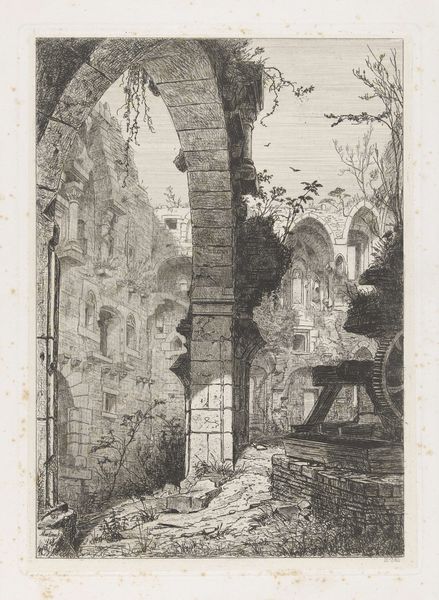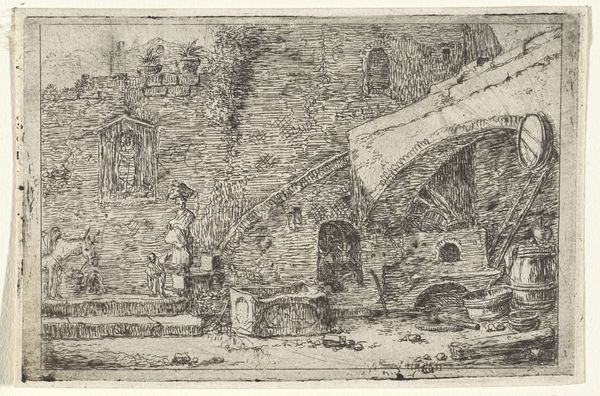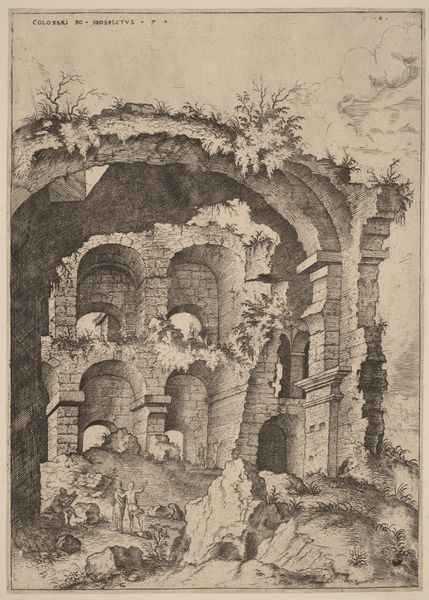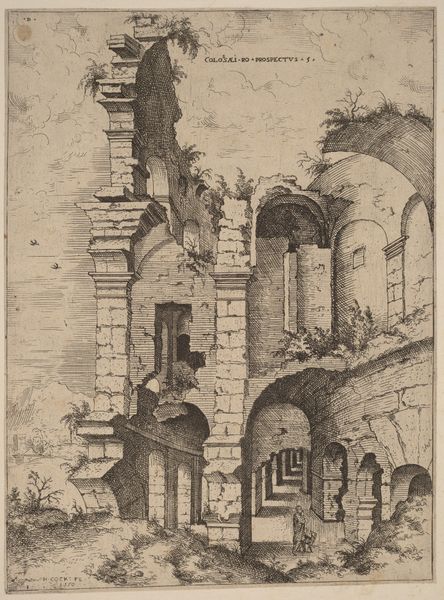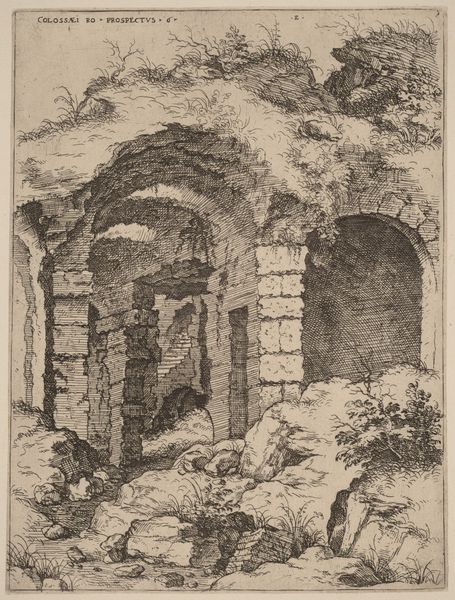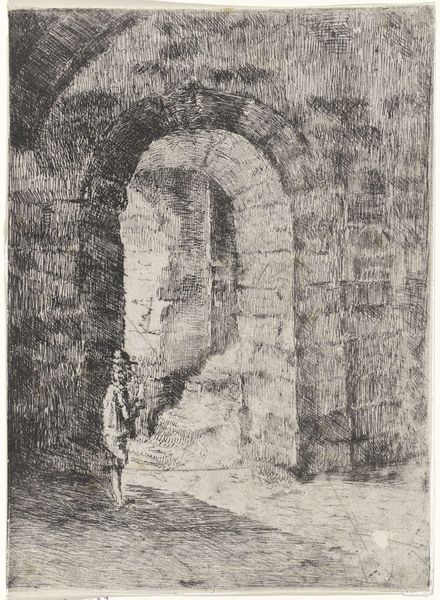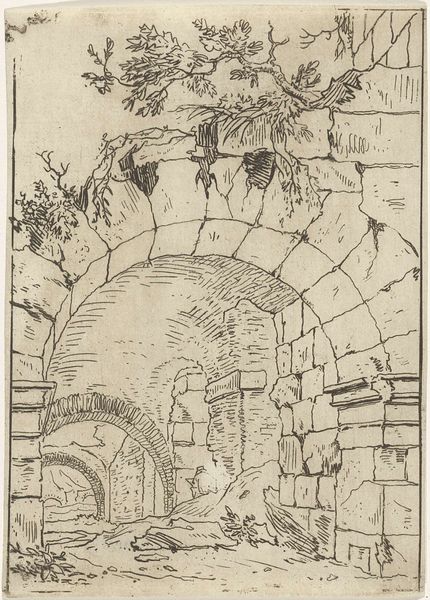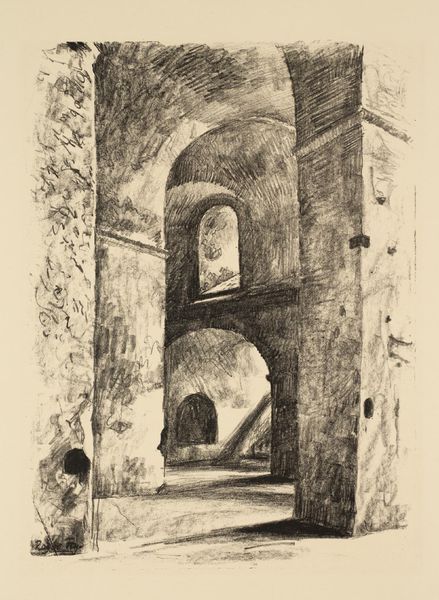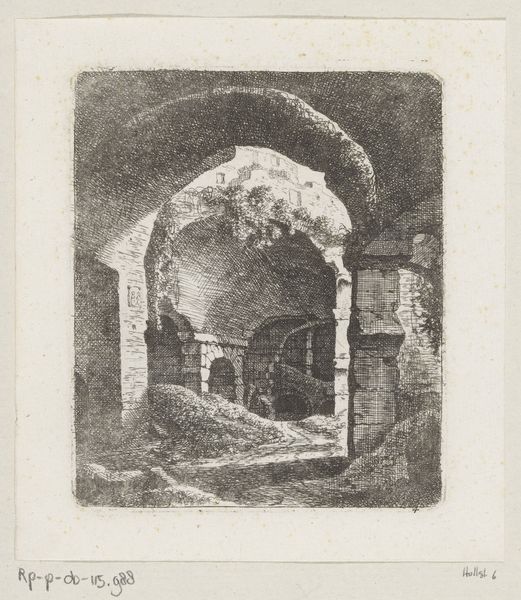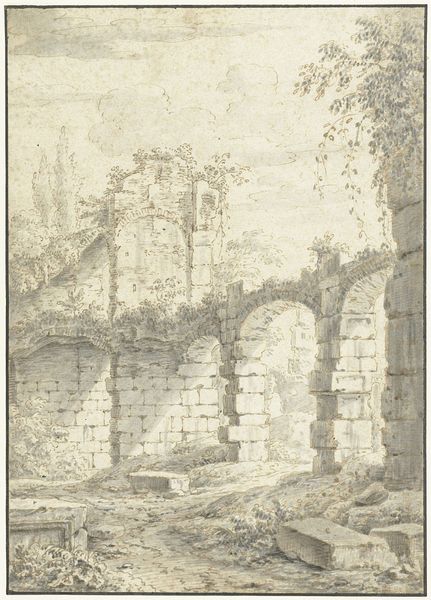
drawing, etching, ink
#
drawing
#
medieval
#
baroque
#
pen sketch
#
etching
#
pencil sketch
#
old engraving style
#
landscape
#
etching
#
personal sketchbook
#
ink
Dimensions: height 124 mm, width 93 mm
Copyright: Rijks Museum: Open Domain
Editor: So, this is "Begroeide ruïne," or "Overgrown Ruin," by M. Schaep, from 1648. It looks like it's made with ink, probably an etching. I’m immediately struck by how delicate the linework is, especially contrasting with the crumbling stonework. It gives off this contemplative, melancholic vibe. What do you make of it? Curator: Ah, yes, a dance between decay and persistence! What resonates with me is how Schaep uses that delicate line work to portray the tenacity of nature reclaiming what was once meticulously built. Can you feel the embrace, the soft coup d'état of the botanical world taking over, weaving itself into the architecture's bones? Almost as if it's singing a quiet song of time’s passage. Editor: Definitely, the plants soften the harshness of the ruin. But is there any kind of cultural context? Why would someone want to make art about a ruin? Curator: Precisely. In the 17th century, ruins held a particular allure. They represented a tangible link to the past, a physical manifestation of history’s ebb and flow. Think of them as moral allegories etched in stone and vine, potent symbols of impermanence. What do you suppose Schaep, sitting before this crumbling edifice, might have been pondering? Editor: I guess…the fleeting nature of human achievement? Maybe even a bit of a "vanitas" theme, but played out on a grand, architectural scale? Curator: Absolutely! And note the figure in the lower corner, sketching. It is as if he, or maybe she, is literally extracting meaning from what is left. That simple act anchors the whole composition for me, gives purpose to the ruin. That drawing acts as an exercise in meditating on memory, beauty, and perhaps even hope, blooming in the most unlikely of places. It feels timeless. Editor: That makes me look at the drawing in a totally new way. It’s not just a depiction of a ruin, but a commentary on how we engage with the past. I’ll have to remember that next time I visit some old Roman ruins. Curator: Precisely! Each crumbling brick whispers stories if we’re only willing to listen.
Comments
No comments
Be the first to comment and join the conversation on the ultimate creative platform.
